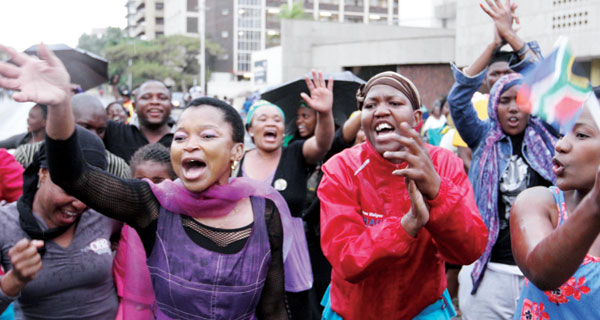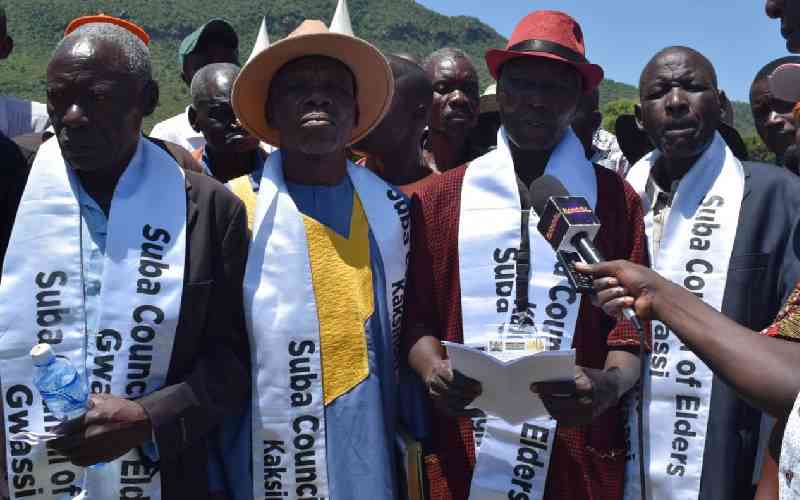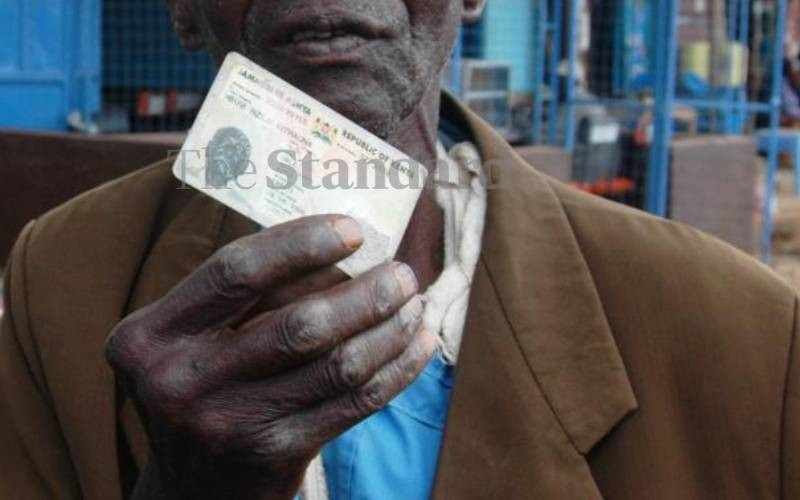 |
|
South Africans celebrate, with song and dance, the passing on of their former President Mandela. [PHOTOS: MAXWELL AGWANDA/STANDARD] |
By Machua Koinange
Pretoria, South Africa: Thousands of mourners yesterday braved the morning chill and afternoon heat as they lined up for hours to view Nelson Mandela’s body. The remains of the late Mandela still lie in state at the Union Buildings in Pretoria.
In addition, Kenya’s High Commissioner to South Africa, Patrick Wamoto, told The Standard on Saturday he was unlikely to represent President Uhuru Kenyatta at the graveside ceremony in Qunu.
“It is by special invitation only, and no such invitation had been received,” he said.
President Uhuru, who attended the FNB Stadium funeral service on Tuesday, is not expected to make the trip back to Qunu. Wamoto said the South African government had encouraged diplomats to urge their heads of state to attend the Stadium service because the Qunu event was likely to be a closed affair.
It also emerged yesterday that a ritual would be performed on Mandela’s body once it arrives in Qunu today (Saturday) in line with Xhosa traditions. But Mandela’s family Spokesman General Themba Matanzima did not give details, saying some of the rituals could not be released to the public.
Pretoria entered its second day under a cloud of grief and the monotonous wailing of police sirens that blared throughout the night. Most of the time police in vehicles and motorcycle outriders sped through the streets escorting VIP’s and moving around the city.
Mourners lined the streets of Pretoria by 5am and at around 7am long queues had cut through swathes of blocks of the city streets winding their way slowly towards Union Buildings.
A policeman told The Standard on Saturday that unlike on Wednesday when mourners were picked by buses on the corner of Leyds and Stanza Bopape Street, the organisers had abandoned the strategy and mourners walked almost six blocks to enter the building.
“It was just too slow using buses to transport them from a point and then return them. It’s quicker to walk.” In addition, police were now allowing children to view the body unlike the previous day when they had barred children and mourners with bags not to board the buses heading to the Union Buildings.
Rudzani Thongwana, a volunteer, helped direct mourners to the building. He told The Standard on Saturday that mourners had started converging as early as 5am on the city streets. They were viewing the body at the rate of 2,000 mourners per hour.
They sang and danced as they waited in line, chanting liberation songs and slogans. Most were clad in ANC colours and T-shirts with inscription, “We love Mandela.”
Police were present throughout the city. In addition, police on horseback patrolled the streets while military helicopters hovered over the air sometimes flying low at maximum velocity.
Felt from rooftops
Their propellers could sometimes be felt from the rooftops. Many streets remained closed with orange barricades. Police directed both vehicles and human traffic as the thousands of South Africans converged to pay homage to their fallen icon.
Stay informed. Subscribe to our newsletter
Zola Mbolekwa, a citizen, together with her two daughters was still in the queue three hours later. She was standing on the Leyds Street when I caught up with her. Zola said she had brought her two children because she wanted them to witness history. “Mandela has been a great man, one of the greatest. My children watched him on television. Bringing them here is historic. They will tell their children how I took them to see Mandela,” she said.
Kamohelo Katsi, Mokhidisi Katsi and Malefetesane Kotsi drove the 150km stretch from Fountains village to Pretoria to view Mandela’s body. They had just viewed the remains when I met them at the 600 block Stanza Bopape Street. They arrived in Pretoria at 8:30am but did not view the body until 2pm.
Kamohelo had tears trickling down as he recounted the experience. “I wanted to see him for the first time, and this was a good chance. I did not really have any expectations…but the way I saw him, he was not in a good state. It was not what I expected, but the trip was worth it.” Mokhidisi told The Standard on Saturday: “I never saw him in life, it was great just seeing him.”
Malefetesane said: “It was significant just seeing him, and saying thank you and goodbye.”
Mourners complained to police about others jumping the queue, even though there were no ugly incidents reported.
Meanwhile, in Qunu, family Spokesman, Gen. Matanzima, said once Mandela’s body arrives at home today, it will be received by Abathembu clan elders and taken to Mandela’s bedroom, where an elder will “announce the arrival of Madiba’s spirit.”
In Xhosa tradition, some rituals are performed on ordinary people while others are reserved for royals like Mandela, who was born into chieftaincy and was treated with royalty. Six Abathembu clan elders will be present in the bedroom where his coffin will be kept.
Tomorrow the pallbearers will be led to the graveyard by an elder. The ceremony will start at 9am and end at noon.
 The Standard Group Plc is a
multi-media organization with investments in media platforms spanning newspaper
print operations, television, radio broadcasting, digital and online services. The
Standard Group is recognized as a leading multi-media house in Kenya with a key
influence in matters of national and international interest.
The Standard Group Plc is a
multi-media organization with investments in media platforms spanning newspaper
print operations, television, radio broadcasting, digital and online services. The
Standard Group is recognized as a leading multi-media house in Kenya with a key
influence in matters of national and international interest.
 The Standard Group Plc is a
multi-media organization with investments in media platforms spanning newspaper
print operations, television, radio broadcasting, digital and online services. The
Standard Group is recognized as a leading multi-media house in Kenya with a key
influence in matters of national and international interest.
The Standard Group Plc is a
multi-media organization with investments in media platforms spanning newspaper
print operations, television, radio broadcasting, digital and online services. The
Standard Group is recognized as a leading multi-media house in Kenya with a key
influence in matters of national and international interest.









